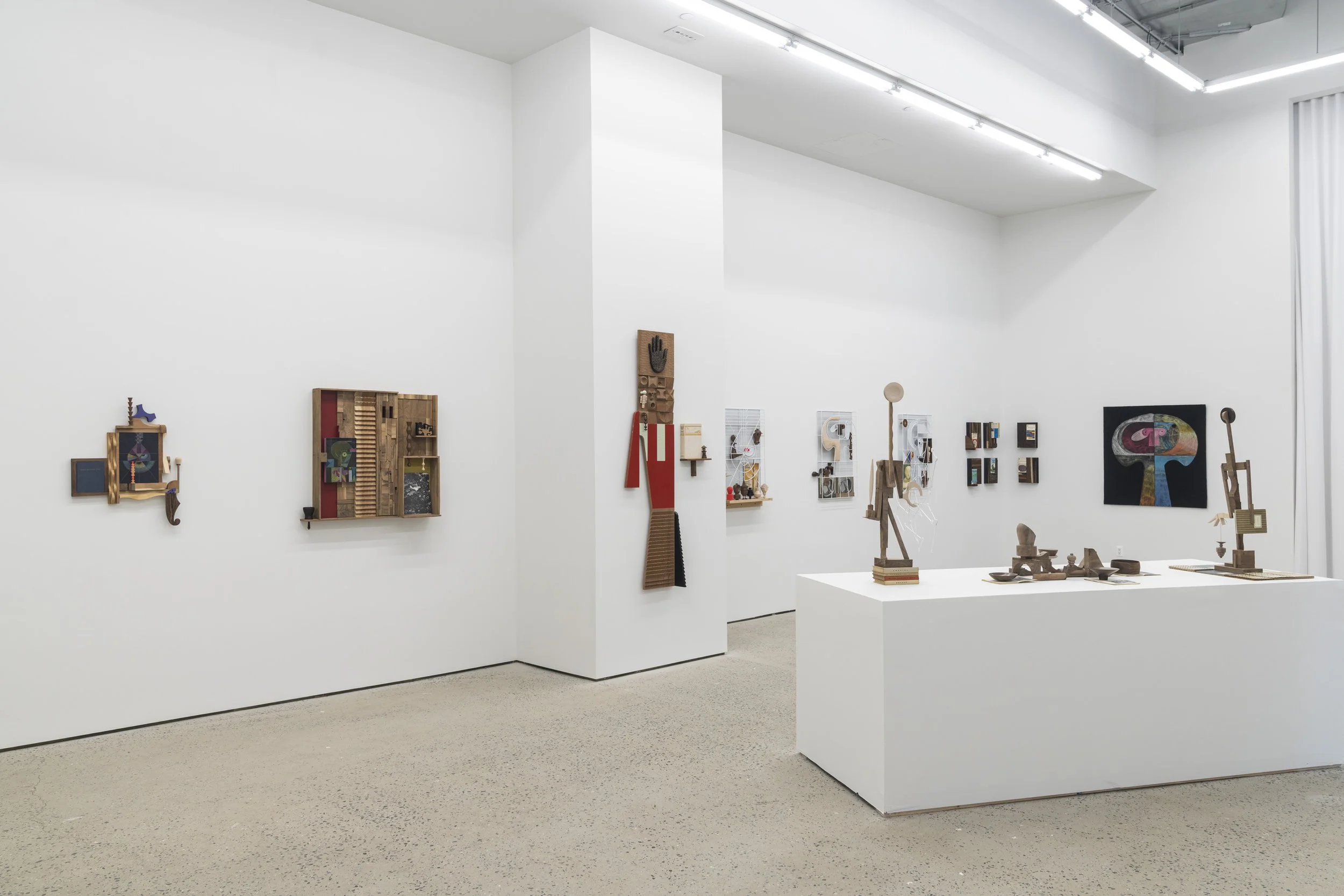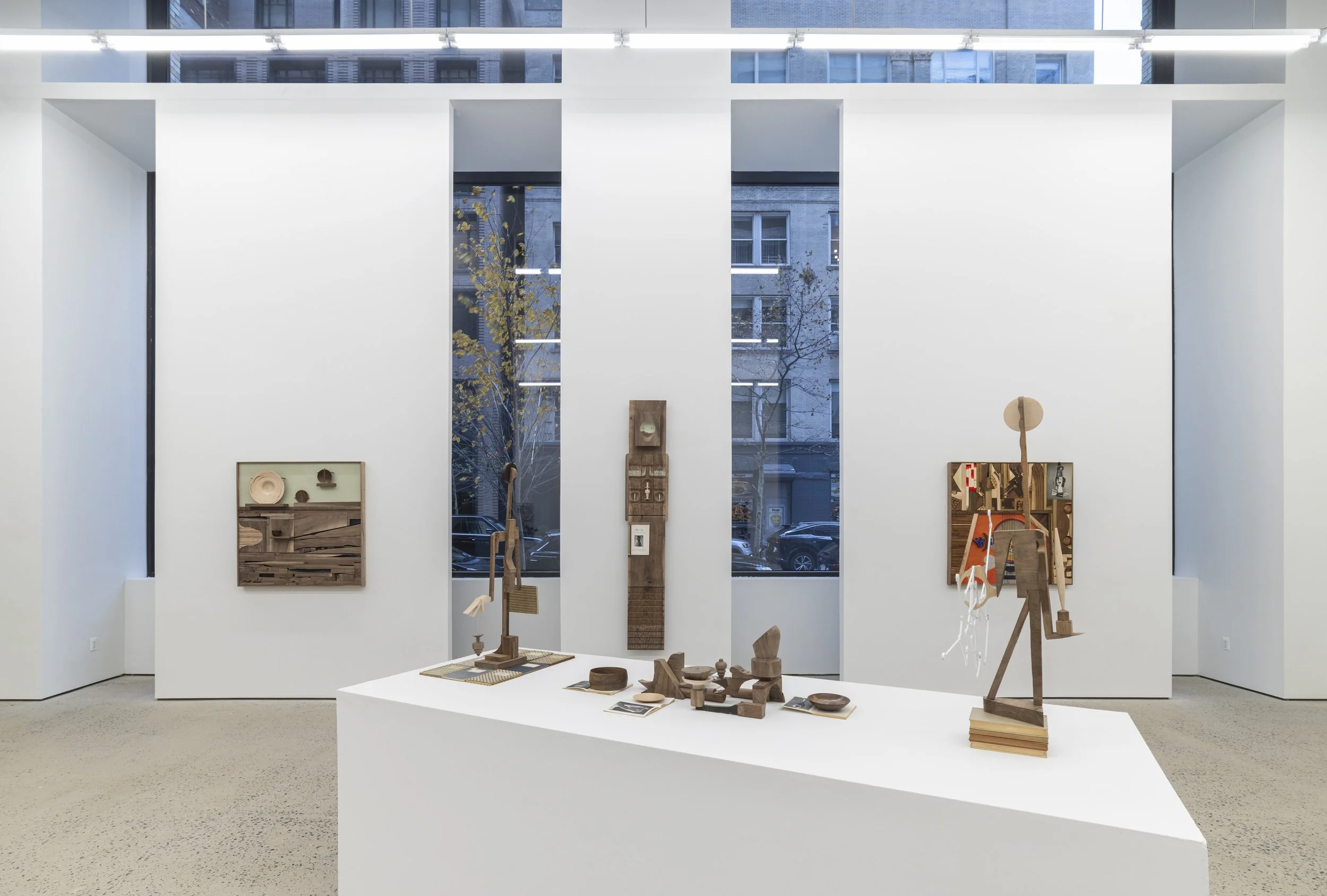Edgar Orlaineta
"The 'Pataphysic Craftsman"
Swivel Gallery is pleased to present Edgar Orlaineta’s first solo exhibition with the gallery, The ‘Pataphysic Craftsman, featuring a series of sculptural works and assemblages that explore the poetic possibilities of making by hand in an age dominated by automation and abstraction.
November 13th - December 10th, 2025
555 Greenwich Street, New York City
“The ‘Pataphysic Craftsman”, Installation View, Photography by Cary Whittier
“Pataphysics is the science of imaginary solutions,” wrote Alfred Jarry at the end of the nineteenth century. With that definition—both precise and absurd—he founded a poetic and subversive discipline devoted to the study of exceptions rather than rules, of the particular over the universal, of the useless over the functional. It is within that territory, suspended between play and lucidity, that Edgar Orlaineta’s practice unfolds: a search that moves between craft, imagination, and doubt—a poetics of the possible in a world that has lost its faith in reason. Perhaps pataphysics is more necessary now than ever. Not as an escape, but as an experimental method in the face of exhausted systems—diplomacy, politics, reason—all of which have failed. In this context, the artist’s labor reemerges as an act of resistance: the last space where a different form of life can still be imagined.
“The ‘Pataphysic Craftsman”, Installation View, Photography by Cary Whittier
Orlaineta’s exhibition is not merely the outcome of his studio work; it is the expression of an ethical stance. His manual practice—rigorous, silent, and persistent—embodies a way of thinking through the hands. Paraphrasing the artist himself: art does no harm. Not because it is harmless, but because its practice reminds us that it is still possible to live otherwise. The artist does not seek to conquer the world, but to recreate it—again and again—through gesture, through craft, through error.
Working with historically charged materials—primarily wood—and in dialogue with the modernist avant-gardes, Orlaineta produces objects that appear anachronistic: things that want to be modern but no longer can, at least not without irony. That temporal distance becomes fertile. Utopia is not an end, but a method: utopia is the path, not the result. In his work, labor, process, absurdity, whim, and even failure acquire their own value. To these, one could add austerity (procedural, not final), discretion, and—why not—love.
“The ‘Pataphysic Craftsman”, Installation View, Photography by Cary Whittier
Love for the material and for its origin—the world itself. Love for dialogue with matter in its most primary sense: touch, weight, gravity, resistance. Wood, his chosen medium in recent years, becomes a vehicle for transformation—into objects that converse with other “real” things: books, stones, used objects, fragments of the everyday. He is interested in the objecthood of things, their way of existing and signifying, before and beyond art. He seeks to free the viewer from the prejudice of facing an “artwork” and instead to offer a thing—something open, to be reimagined by whoever encounters it.
In this exhibition, the titles evoke traditional trades and manual labors: the turner, the sculptor, the craftsman. Each gesture carries a political dimension: the reclaiming of handwork, of intelligence embodied in gesture. Orlaineta reminds us that thought does not reside solely in the head, but also in the body, and specifically in the hands. As with the question of the egg, we might ask: which came first, the hand or the idea? The artist admits that sometimes the object precedes the idea; other times, the idea hides within the thing—and perhaps the thing is already an idea. In the end, everything made may be nothing more than imagined.
“The ‘Pataphysic Craftsman”, Installation View, Photography by Cary Whittier
To conquer the world, one need not dominate it—one must imagine it. Edgar Orlaineta’s world fits within less than sixteen square meters—his studio—but those dimensions expand inwardly. Outside lies the world that belongs to no one and to everyone; inside, his own, growing with every gesture.
His proposition is clear if we follow his path; his example, even clearer: today, to be a craftsman—and a pataphysician—is itself an act of resistance, a form of hope.
Written by Rafael Toriz





